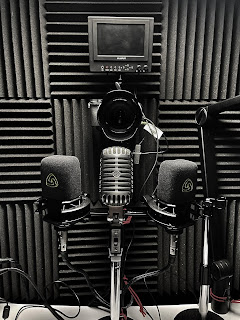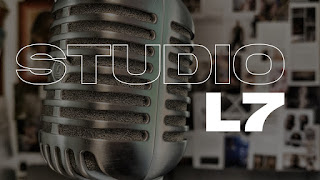Understanding the Nuance: Binaural vs. Spatial Audio Recording
A Deep Dive into Binaural and Spatial Audio: The Rich Tapestry of Audio Recording and Playback
The interesting field of audio recording and playback is a maze of sophisticated methodologies, developing technology, and subtle distinctions. At its core, audio technology attempts to capture and replicate the essence of real-life sound, and two approaches typically take center stage in this enormous soundscape owing to their cutting-edge approach to immersive sound: binaural and spatial audio.
The differences between these two may look small, virtually undetectable to many, especially if one is not very sensitive to the nuances of sound. However, learning about their particular characteristics and uses may greatly enhance the aural experience, giving listeners a whole new perspective on sound and space.
This investigation will lead you deep into the core of binaural and spatial audio methods. We'll peel back the layers that distinguish them, investigate the science underlying their immersive properties, and discover the plethora of applications they're suitable for in our modern world. Buckle in for an audio adventure that will change the way you hear and experience sound.
A Brief Overview
Before delving into the differences, it’s essential to understand what each term means:
Binaural Audio: Binaural audio, an intriguing and innovative sound recording technique, employs two meticulously placed microphones that are typically positioned to emulate the natural spacing and orientation of human ears. This deliberate arrangement is far from arbitrary; it's masterfully designed to encapsulate a three-dimensional stereo auditory experience. For listeners, this isn't merely about hearing sound; it's about being transported. The end result is a sensation where one feels seamlessly integrated into the very setting of the recording, immersed deeply, as though they are standing right at the heart of the original sound environment. Through binaural audio, the boundaries between the recorded sound and reality blur, offering an unparalleled listening journey.
Spatial Audio:
Spatial audio, often synonymous with terms like 3D audio or surround sound, embodies a sophisticated audio recording and playback technique designed to mirror the multifaceted way we perceive sound in our natural environment. Instead of the traditional two-dimensional audio perception we get from standard stereo (limited to left and right channels), spatial audio delves deeper, offering a panoramic sonic experience.
In essence, spatial audio weaves an encompassing auditory tapestry around the listener. It transcends the conventional barriers of sound directionality, allowing one to perceive sounds not only from the left or right but also from above, below, front, back, and every conceivable angle in between. This intricate audio approach provides a dynamic, immersive soundscape, closely mirroring the myriad ways our ears pick up auditory cues in real-world settings, thus transporting listeners into a realm where sound knows no boundaries.
Diving Deeper into Binaural Audio
A Sensory Illustration of the Magic of Binaural Audio
Consider yourself wrapped in the bosom of a tranquil park for a minute. When you close your eyes, the world becomes a rich tapestry of noises. The delicate rustling of leaves to your right tells tales of a mild breeze, while fragmentary murmurs of a faraway conversation dance on the outside of your perception. If you listen intently, you could hear the city's rhythmic heartbeat gently hum, creating an audible backdrop just beyond the immediate tranquility.
This dense symphony of sounds provides a fascinating soundscape, accented by their varied directions and intensities. It's a monument to our ears' incredible capacity to understand aural clues from every angle, allowing us to put together a sense of both position and distance.
Binaural recording attempts to capture this particular feeling. What is its major mission? To accurately mimic the sensation of spatial awareness humans experience in such situations. Enter the specially designed fake head microphones. These aren't your average microphones; they've been precisely designed to mimic the shape of a human skull, replete with microphones strategically placed where our ears would be. This architecture is critical in recording sounds exactly as we would experience it in real life.
A remarkable metamorphosis occurs when this music is played again, even on conventional stereo headphones. The listener is quickly transported, able to distinguish sounds coming from different directions and judge their relative distances, generating an experience that is astonishingly similar to real life. Binaural audio is an auditory adventure that smoothly bridges the domains of reality and recorded sound.
Understanding Spatial Audio
Binaural to spatial audio: The Evolution of Sound
While spatial audio dramatically expands the possibilities, binaural audio offers a great advance in stereo recording, capturing the subtlety of left and right auditory experiences. It is not just satisfied with binaural sound's bidirectional range. Instead, it aspires to include the entirety of the auditory spectrum by providing a full 360-degree immersive audio experience that envelops the listener from all sides.
Through a symphony of technology breakthroughs and rigorous recording procedures, spatial audio, a complex art form, is accomplished. An array of microphones is first deployed and placed carefully so that it may record sound coming from every angle imaginable. But recording is only one part of the solution. Modern headphones and several speakers that have been calibrated to reproduce the multi-directional subtleties of the recorded sound are used during playback.
However, it's not just about the technology; software is also important. The frontline of this transformation is being led by sophisticated audio methods like Ambisonics and object-based audio. The numerous spatial clues that are included in the audio are intended to be captured, encoded, and then decoded using these techniques. This seamless technology integration is used on a variety of platforms, from the resonant sound systems of contemporary movie theaters to the virtual worlds of cutting-edge VR installations to the elegant atmosphere of high-end home audio systems.
Take a look at this example to better understand the wonder of spatial audio: You're snugly seated and enjoying an action-packed movie. This passive viewing experience becomes an emotional aural journey thanks to spatial audio. Suddenly, you are *in* the movie rather than just viewing it. You can really feel the noise of a jet engine as it soars just above you in addition to hearing it. A hidden whisper isn't just silent; it's also quite near, almost if someone is whispering private information right behind your back. In essence, spatial audio gives your auditory experiences an unmatched richness by enabling you to "feel" and "live" the music as well as "hear" it.
Key Differences
1. Recording Methodology:
Binaural: Uses two microphones, often in a dummy head setup.
Spatial: Uses multiple microphones and can involve complex arrangements to capture sound from all directions.
2. Playback Equipment:
Binaural: Best experienced with stereo headphones.
Spatial: Requires specialized playback systems, like surround sound setups, advanced headphones, or VR headsets.
3. Applications:
Binaural: Often used in ASMR videos, certain musical recordings, and some VR applications.
Spatial: Used in movie theaters, VR, gaming, and advanced home audio systems.
4. Depth of Immersion:
Binaural: Gives the illusion of 3D sound in a stereo environment, primarily front-to-back and left-to-right.
Spatial: Creates a full 360-degree audio environment, adding the vertical dimension (above and below).
Binaural and spatial audio approaches both strive to provide a more immersive listening experience; however, both techniques use different methodology, are best suited for different applications, and have different playback requirements. Binaural audio creates a three-dimensional stereo effect that is ideal for private listening sessions while wearing headphones. In contrast, spatial audio immerses listeners in a full multi-dimensional soundscape, taking them to new worlds whether they are experiencing the expansive universe of a science fiction movie or the detailed environment of a video game. This type of music has been increasingly popular in recent years.
Listeners are no longer only passive recipients of sound as a result of improvements in technology related to audio. They are actively transported into various dimensions, places, and experiences as opposed to passively being transferred. The first step on this auditory adventure is just becoming aware of the distinction between binaural and spatial sounds.


